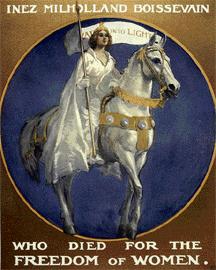 |
| Mahler at 43. |
Mahler was born in Bohemia on July 7, 1860. He went on to become an early world-famous conductor. He was also a composer, with ten symphonies to his credit when he died on May 18, 1911 at a young 50.
His music was appreciated by other leading conductors, and one of his biggest followings was in Amsterdam, at the Concertgebouw, which was founded in part through a campaign by Charles Boissevain, editor-publisher of the Algemeen Handelsblad.
Members of the Boissevain family were heavily involved with the Concertgebouw in the first few decades of the 20th century and several became friends of Mahler. A famous photo by Han de Booy (married to Hilda Boissevain and therefore my great-uncle) of Mahler with the Concertgebouw crowd was featured on a Dutch stamp.
He graduated from the Vienna Conservatory in 1878 and after a series of apointmenets at various opera houses he became in 1897 director of the Vienna Court Opera (Hofoper). Mahler converted to Catholicism to secure the post, but was regularly attacked by the anti-Semitic Austrian press.
 |
| Photo of Mahler by Han de Booy, at Zandvoort, Holland; de Booy married Hilda Boissevain, sister of Inez Milholland's husband Eugen. |
Ironically, the ban against Mahler piqued interest in his work and after 1945 his work became more popular than it was during his lifetime. Also, his music was advanced when he composed it, but with many other conductors following in his footsteps the modern ear is more attuned to his music. He became one of the most frequently performed of composers.
BBC Music Magazine surveyed 151 conductors in 2016 and they ranked three of Mahler's symphonies in the top ten symphonies of all time.
As a conductor, he was one of the greatest opera interpreters in history, including the works of Wagner, Mozart, and Tchaikovsky. He was for a time director of New York's Metropolitan Opera and the New York Philharmonic.













